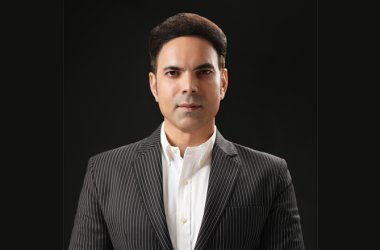
By: Nick Curran, Head of Endava MENA
In a highly competitive market like the UAE, most banks have already embarked on their digitisation journeys. On this path, one of the first steps banks must take is to assess and dismiss their legacy architecture and move to modernise their entire IT infrastructure.
The traditional high street bank is seen by many as the first port of call for private and public financial services, yet many banks are struggling to modernise their IT infrastructure. This is often due to their legacy architecture. Traditional banks have relied for decades on mainframe computers running programs with user interfaces that many of us last saw decades ago. Their architectures are frequently unconnected, storing disparate data across the enterprise, which complicates decision-making and prevents many banks from having a unified view of their clients.
Attempting to integrate new systems into these infrastructures can present even bigger obstacles. Frequently, the APIs required to link new systems to outdated architectures do not exist. In addition, it is becoming increasingly difficult to find individuals with the expertise required to manage the legacy architectures present in many institutions.
According to a global poll of 1,015 respondents performed by Finder in April 2022, UAE customers are among the most eager to embrace digital banking. As per the study, the UAE ranks sixth in digital banking penetration, ahead of Mexico, Germany, the Philippines, and the US.
Connected, data-driven experiences have shifted expectations
Personalised, connected, and data-driven experiences have become the norm for major online platforms provided by brands in industries such as retail and entertainment. Typically, these interactions provide frictionless service, limit customer wait times, and eliminate the need for repetitive manual interactions to complete a transaction.
Naturally, consumers and businesses alike have begun to anticipate these types of connected service experiences from all brands, including banks. As a result of the pandemic, we were compelled to transition to digital-first service, which accelerated this demand. By failing to meet these expectations, banks risk losing their customers to competitors.
Moreover, as new mobile payment methods make it easier than ever before to spend money, cloud-native FinTech’s are beginning to capitalise on evolving consumer behaviours.
Numerous FinTech’s are utilising cloud-native and AI-powered services to expedite loan decisions, empower customers with seamless self-service tools, and bring new products to market that reflect current trends such as rising interest rates more quickly. In many cases, shifting expectations and increasing pressure from innovative competitors are compelling traditional banks to address the legacy architecture that has hindered their competitiveness in recent years. In fact, 85%of global banking decision-makers are pursuing digital transformation or plan to do so.
How to motivate support for modernisation
For banks, one of the most important things to consider when addressing their legacy architecture is that it is a complex undertaking and will likely require external assistance. It is, therefore, crucial for banks to have a crystal-clear vision of their modernisation objective.
Although saving money, enhancing the customer experience, and staying ahead of the competition are all credible motivations, they must make sense for the organisation.
Banks might often discover, for instance, that increasing customer satisfaction and reducing costs are incompatible, therefore, should carefully consider their goals. To encourage engagement throughout the organisation, they must also articulate a vision that everyone can rally behind, such as financial growth.
Consequently, digitisation requires time and money. Hence, IT officers frequently receive significant opposition from senior decision-makers, the majority of whom view IT as a cost centre, not a value driver. To assist in altering their perception, banks should begin with a simple proof of concept that demonstrates immediate, quantifiable value.
We suggest selecting a low-risk, back-end process for modernisation. This may involve automating portions of the claims process to make it more efficient, matching IDs across multiple systems to create a holistic view of the customer, and integrating payments into claims to expedite claims processing. All of these alterations will have an effect on efficiency, resulting in an enhanced customer experience. In contrast, if banks attempt to modernise a front-end platform, it will continue to run on the same legacy systems, nullifying the benefits of a customer-facing makeover.
Importantly, when approaching this task, the proof of concept should be based on a simple product that doesn’t require a great deal of time or effort to implement.
Identify the appropriate companion for the journey
In my experience, many financial services organisations that attempt large-scale transformations on their own end up spending more time and money than those that find the right delivery partner. They also run the risk of spending a substantial amount before realising they lack the internal skills and resources to realise their goals.
It is essential to find a partner who can assist with the conceptual framework and strategic planning of the transformation project. Importantly, they must also comprehend the industry’s intricate systems and procedures. Furthermore, they must collaborate closely with IT to identify quick wins and implement new, evergreen cloud solutions without interrupting ongoing operations.
Undoubtedly, addressing legacy architecture is a difficult endeavour. However, with the right partner, banks can connect and unlock their siloed data to provide the entire organisation with a unified view of customers, modernize their legacy backend processes, and position their bank as a digital-first competitor.





